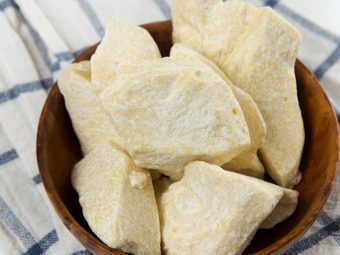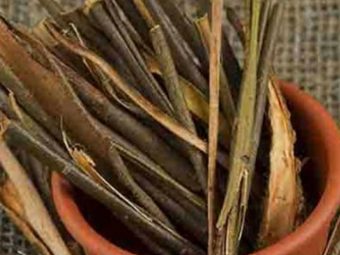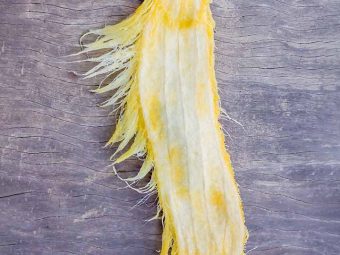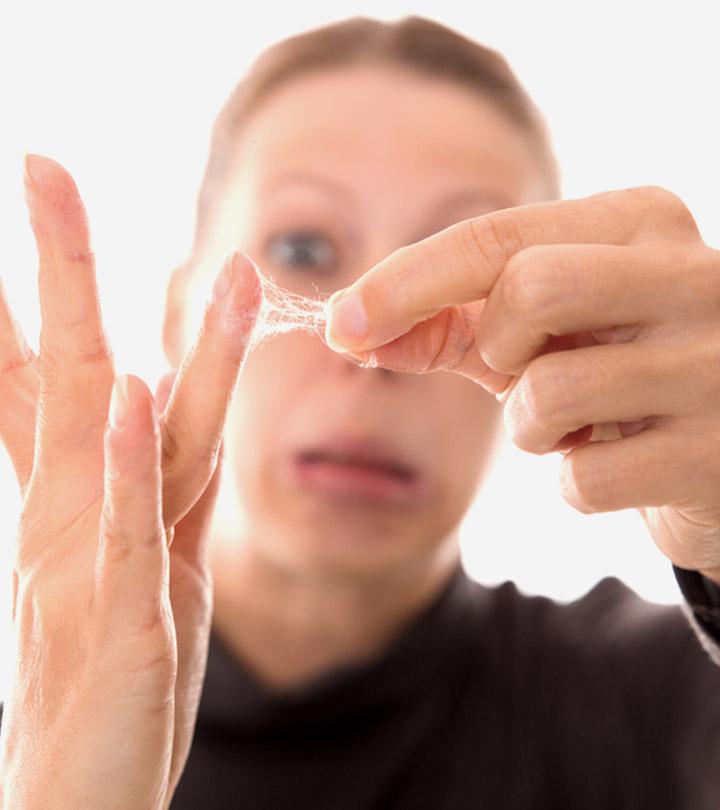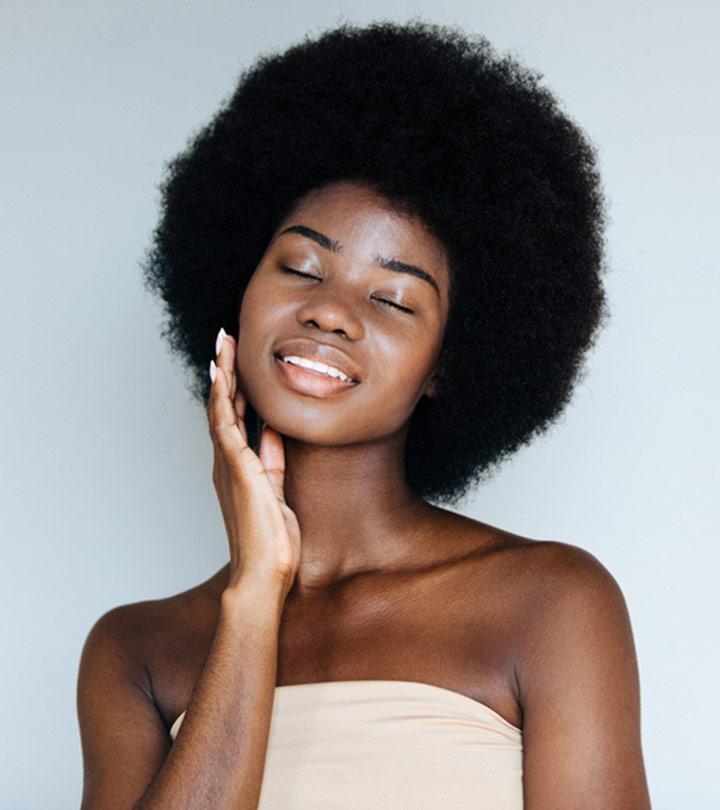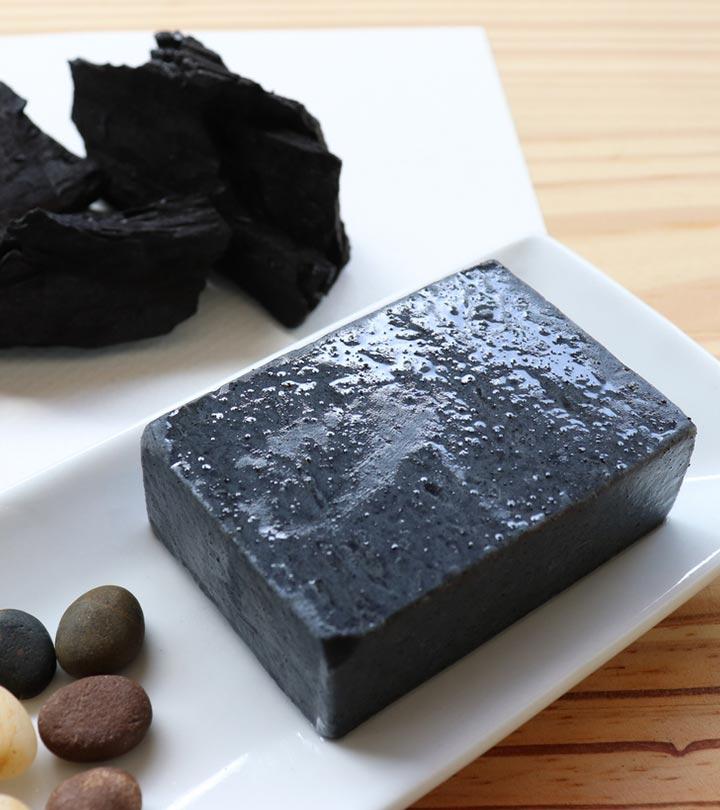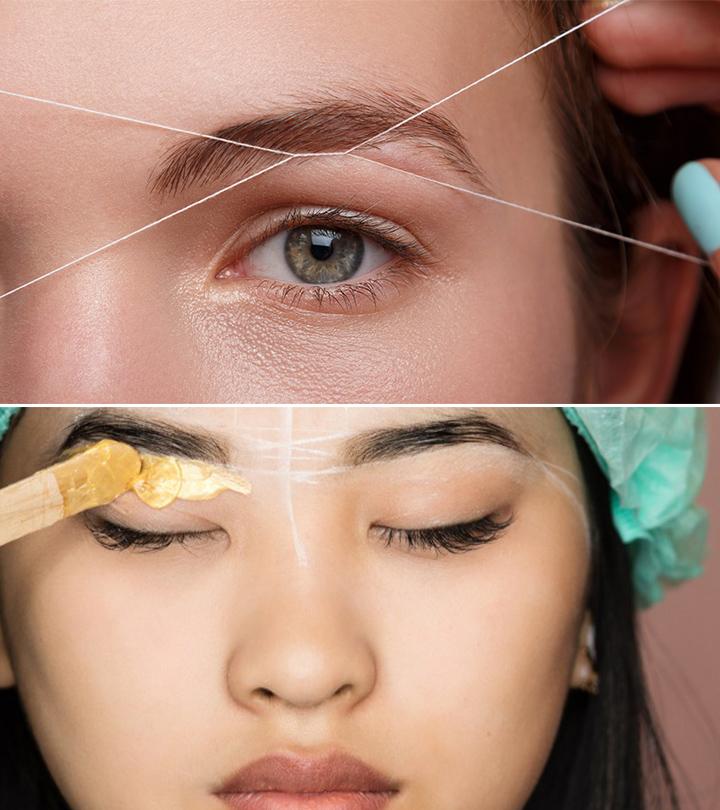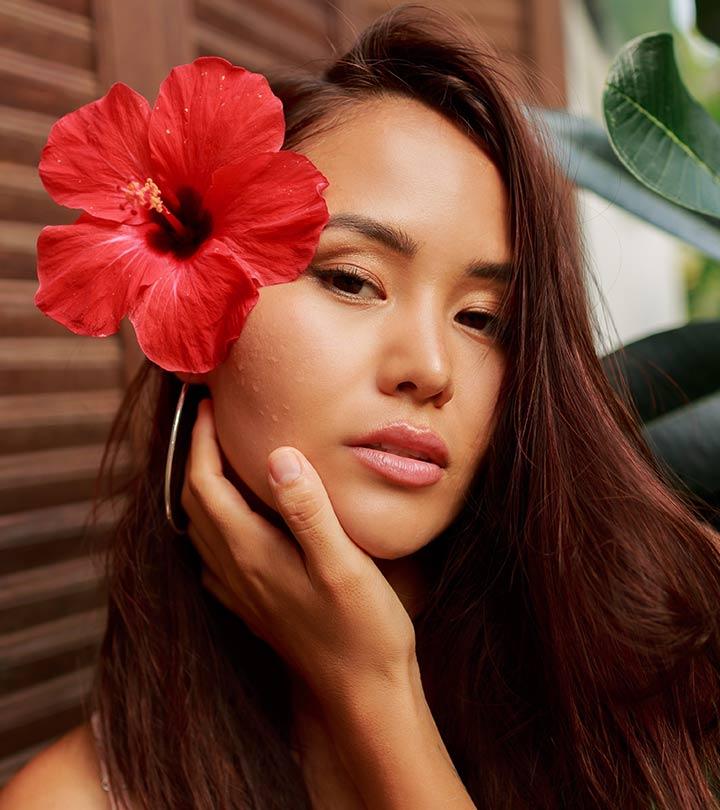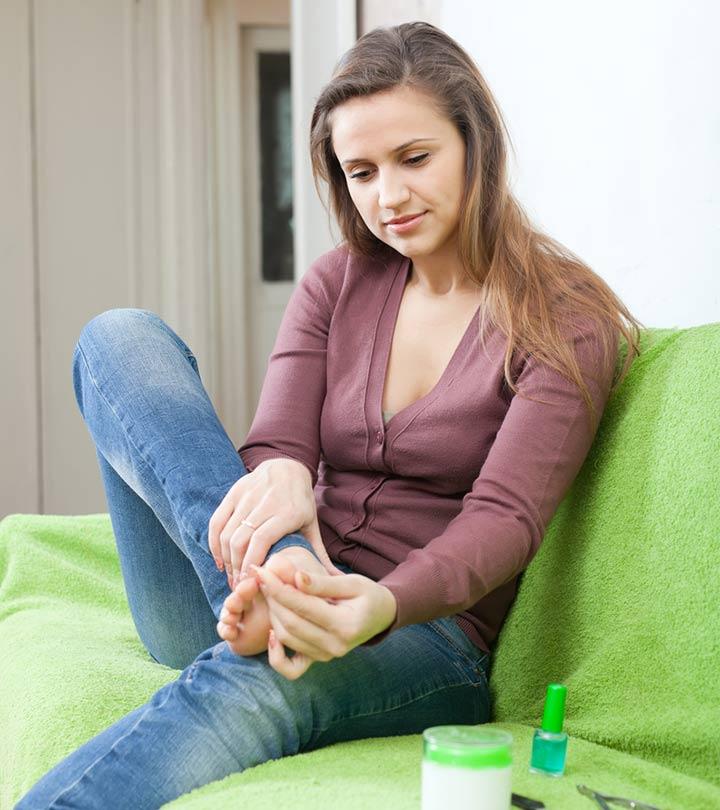Mango Butter For The Skin: Benefits, How To Use, And More
You'll be surprised to learn how this light oil improves the elasticity and texture of your skin!

Image: Shutterstock
Mango butter has several benefits for your skin. You can use mango butter for skin issues like dryness, flakiness, and itching. It also helps to keep the skin moisturized and soft. Mango butter is derived from mango seeds. It is rich in skin-friendly nutrients and antioxidants and can heal irritation, manage itchiness, soothe dry skin and improve the texture. If you wish to use mango butter for your skin, read this article to learn more about the benefits of mango butter, how to use it, and more. Scroll down.
 Know The Ingredient: Mango Butter
Know The Ingredient: Mango ButterWhat Is It?
A topical cream made from the seed of the mango fruit.
What Are Its Benefits?
Rich in vitamins and polyphenols, it helps combat aging signs, skin dryness, and stretch marks.
Who Can Use It?
Can be used by all skin types.
How Often?
Daily or as recommended by a healthcare professional.
Caution
May cause irritation or allergy in some individuals. Consult a doctor before using it if you are allergic to mangoes.
In This Article
What Is Mango Butter?
Mango butter is the natural oil or fat derived from the mango kernel (the white part inside the seed). The mango kernel is rich in antioxidants and polyphenolic compounds and may help in nourishing and hydrating skin to improve skin elasticity(1). However, mango butter is not non-comedogenic and may clog pores. Therefore, avoid using it if you have oily skin, sensitive skin, acne-prone skin, and combination skin. Now, let’s take a look at the other benefits of mango butter.
 Trivia
TriviaBenefits Of Mango Butter For The Skin
1. Prevents Signs of Aging

The mango kernel contains vitamins A, E, C, and K, and polyphenols like gallic and ferulic acids, mangiferin, and tannins. All these antioxidants protect the skin from UV damage and photoaging and neutralize harmful free radicals to prevent early signs of aging (1), (2). It is rich in vitamin C that promotes collagen synthesis to improve the skin texture and elasticity (3), (4), (5). Mango butter leads to the firming of the skin and a reduction in the appearance of wrinkles and fine lines.
2. Improves Dry Skin Conditions
Mango butter contains phytosterols, fatty acids (triglycerides), and tocopherols and has excellent emollient properties. This helps in softening and improving skin texture. Mango butter has anti-inflammatory properties and may help soothe skin irritation and itching caused by dry skin conditions (1), (6). It can condition your skin by preventing moisture loss and may also help in soothing eczema and psoriasisi XItchy, scaly, and painful patches on the scalp, elbows, and knees triggered by stress, cold, or infections. flare-ups.
3. It May Heal Wounds
Mango butter has wound healing properties. Studies found that this naturally occlusive ingredient could protect the skin barrier and repair damaged and cracked skin (1).
4. May Prevent Stretch Marks And Scars
Mango butter works as a moisturizer for the skin and improves skin elasticity. Massaging the abdominal area with it during pregnancy may help prevent stretch marks. Moreover, massaging mango butter on fresh stretch marks and scars may also improve their appearance as this butter has wound-healing abilities and promotes collagen development.
5. May Help In Skin Lightening
Mango butter is rich in vitamin C, which may contribute to its potential for skin lightening. While there is no scientific evidence to verify this claim, anecdotal evidence suggests that it may indirectly help improve skin tone by keeping the skin hydrated and improving its radiance and texture. All these effects may make your skin appear healthy and brighter.
You may use raw mango butter or mix it with other ingredients to prepare body butter and other DIY products. Scroll down to learn how to use mango butter for your skin.
 Did You Know?
Did You Know?How To Use Mango Butter For The Skin: DIY Recipes
1. DIY Mango Body Butter

What You Need
- 1 cup of mango butter
- 1 teaspoon of cold-pressed coconut oil
- 2-3 drops of any essential oil (optional)
Process
- Melt the mango butter and mix all the ingredients.
- Blend it well until you get a whipped cream-like texture.
Why It Works
Coconut oil moisturizes the skin and can help protect the skin barrier (7), (8). This organic body butter can keep the skin hydrated and prevent dryness and flaking.
2. Mango Butter Lip Balm
What You Need
- ½ teaspoon of mango butter
- ½ teaspoon of shea butter
- 2 teaspoons of sweet almond oil
- 2-3 drops of lavender essential oil
- 1 teaspoon of beeswax (alternative: shea butter)
- 1 drop of tea tree oil
- ¼ teaspoon of vitamin E oil
Process
- Melt and mix all the ingredients (except essential oils) in a double boiler.
- Add the essential oils to the mixture once it cools down.
- Store it in a small jar and refrigerate.
- Apply every day to your lips.
Note: Avoid beeswax and essential oils if you are allergic to them.
Why It Works
Shea butter has anti-inflammatory properties, while vitamin E, castor and almond oils, and beeswax keep the skin moisturized and hydrated (8), (9), (10), (11), (12). Lavender and tea tree oils have antiseptic properties and may help heal chapped lips (13), (14). This lip balm can keep your lips smooth and soft.
3. Mango Citrus Body Butter
What You Need
- 2 tablespoons of beeswax
- 2 tablespoons of cocoa butter
- 3 tablespoons of shea butter
- 5 tablespoons of mango butter
- 1 teaspoon of almond oil
- 1 teaspoon of vitamin E
- 5-10 drops of citrus essential oil (for fragrance)
Process
- Melt the beeswax and plant butters in a double boiler.
- Remove the mixture from the heat and let it cool down a bit.
- Add the oils to the molten butter and mix.
- Blend the mixture until you get a whipped cream-like consistency.
- Store it in a glass jar and use it every day on damp skin.
Why It Works
Beeswax, shea and cocoa butters, and almond oil soften the skin, have emollient properties, and prevent UV damage (11), (15), (16), (17). Vitamin E promotes collagen development (2). Citrus essential oil has anti-inflammatory and antioxidant properties (18). This body butter can soothe your skin, reduce dryness, and keep it protected.
4. Mango Butter Lotion Bar
What You Need
- 1/3 cup of mango butter
- 1/3 cup of coconut oil
- 1/3 cup of beeswax
- 5-10 drops of peppermint essential oil
- 1 tablespoon of menthol crystals
- ½ teaspoon of arnica oil (optional)
Process
- Combine all ingredients (except the menthol crystals and essential oils) in a glass bowl and melt on a double boiler. Keep stirring.
- Remove the mixture from heat and add the menthol crystals and stir until it dissolves.
- Once the mixture cools down a bit, mix the essential oil.
- Pour it into molds and leave them for 24 hours.
- Wrap them with plastic or cling wraps and refrigerate.
- Rub the lotion bars on the skin and massage.
Why It Works
Coconut oil moisturizes the skin and may soothe atopic dermatitisi XA condition that causes skin inflammation and dryness on the arms and the back of the knees due to allergens or irritants. . It may prevent UV damage (7), (8). Peppermint essential oil promotes wound healing, and menthol crystals can help relieve pain (19), (20). Arnica oil has analgesici XA class of drugs that are formulated to treat pain ranging from headaches to injuries to diseases. , anti-inflammatory, and wound-healing properties (21).
Montina, a vlogger, shared a tutorial on making whipped mango butter. She advised using the slow melting process and mixed the partially solidified mango butter with coconut oil, honey, vitamin E, and flour. She noted from her personal experience, “I use this on my hair. I use this on my skin; it’s great for stretch marks (i).”
Mango butter can also soothe sunburns and bug bites. You may use any of the recipes to keep your skin moisturized and healthy. Mango butter is often compared with shea butter. Both have similar properties. If you are confused about which one is better, find out in the next section.
Is Mango Butter Better Than Shea Butter?
Both have similar properties, with some minor differences.
- Mango butter is lightweight compared to shea butter.
- Both contain the same fatty acids but in different proportions. Mango butter has a low melting point and contains a high amount of oleic, palmitic, and stearic acids (22). Shea butter takes more time to melt when rubbed between your palms.
- Both mango and shea butters are used in skin care products to moisturize the skin and prevent dryness.
- Mango butter has a subtle sweet scent, while shea butter has a nutty and smokey fragrance.
- Both shea and mango butter may cause allergic reactions. Avoid shea butter if you have nut allergy, and avoid mango butter if you are allergic to urushiol (a chemical found in mango sap that may trigger contact dermatitis).
You may choose any of the butters depending on your preferences. While mango butter is generally considered safe for the skin, it may sometimes cause side effects in some individuals. Let’s take a look!
Side Effects Of Mango Butter On Skin
- It is heavy and may leave residue, which could potentially clog the skin pores and may cause breakouts. It may also exacerbate existing acne.
- People allergic to mango butter may experience symptoms like skin irritation, redness, hives or itching.
- It might make the skin appear greasy. Therefore, people with oily skin should avoid using mango butter or use it in moderate amounts.
Learn how to use mango butter in your skin care routine. Discover the amazing benefits it can have on your skin and how to incorporate it into your daily routine.
Infographic: Benefits Of Mango Butter For The Skin
Adding mango butter to skin care routines is an age old practice. It offers numerous benefits and is budget friendly. Check out the infographic below to read through the major benefits of adding mango butter to your daily skincare regimen.

Illustration: StyleCraze Design Team
Mango butter is a light oil extracted from mango kernels. The benefits of using mango butter for your skin include slowing down skin aging, moisturizing dry and flaky skin, and improving the elasticity and texture of your skin. Even though mango butter and shea butter are similar, mango butter is lighter and has a sweet scent. You can use mango butter in combination with other ingredients as a body butter, body lotion, or lip balm. Ensure that you conduct a patch test before using mango butter. If you experience any allergic reaction, consult a doctor immediately.
Frequently Asked Questions
Does mango butter help treat hyperpigmentation?
Anecdotal evidence suggests that mango butter may help reduce hyperpigmentation and give radiance to your skin and lead to a brightening of the complexion. However, more research is warranted in this regard.
Can I mix shea butter and mango butter and use on the skin?
Yes. You can mix shea butter and mango butter to create a custom body butter for your skin.
Is mango butter antifungal?
Yes, mango butter is antifungal as it is derived from mango seeds that are known to have antifungal properties (23). Anecdotal evidence suggests that due to these properties, it may be beneficial for your scalp health.
Is mango butter a natural sunscreen?
Yes, anecdotal evidence suggests that mango butter is a natural sunscreen. However, there may be limits to the amount of UV protection it can provide. Therefore, always wear broad-spectrum sunscreen while stepping out in the sun, even if you use mango butter.
Key Takeaways
- Mango butter helps in rejuvenating the skin by preventing aging signs, soothing skin irritation, and preventing stretch marks.
- Though mango butter and shea butter have similar properties, mango butter is lighter than shea butter.
- Avoid using mango butter if you are allergic to urushiol, which may trigger contact dermatitis.
Personal Experience: Source
StyleCraze's articles are interwoven with authentic personal narratives that provide depth and resonance to our content. Below are the sources of the personal accounts referenced in this article.
i. [How to] whipped mango butter tutorial for hair and skinhttps://www.youtube.com/watch?v=2DtsUmg7AGw
References
Articles on StyleCraze are backed by verified information from peer-reviewed and academic research papers, reputed organizations, research institutions, and medical associations to ensure accuracy and relevance. Read our editorial policy to learn more.
- Nutritional Composition and Bioactive Compounds in Three Different Parts of Mango Fruit
https://www.ncbi.nlm.nih.gov/pmc/articles/PMC7830918/ - Vitamin E in dermatology
https://www.ncbi.nlm.nih.gov/pmc/articles/PMC4976416/ - The Roles of Vitamin C in Skin Health
https://www.ncbi.nlm.nih.gov/pmc/articles/PMC5579659/ - Antioxidant functions of vitamins. Vitamins E and C, beta-carotene, and other carotenoids
https://pubmed.ncbi.nlm.nih.gov/1444060/ - Topical Vitamin C and the Skin: Mechanisms of Action and Clinical Applications
https://pubmed.ncbi.nlm.nih.gov/29104718/ - Formulation and Evaluation of Exotic Fat Based Cosmeceuticals for Skin Repair
https://www.ncbi.nlm.nih.gov/pmc/articles/PMC2792546/ - In vitro anti-inflammatory and skin protective properties of Virgin coconut oil
https://www.ncbi.nlm.nih.gov/pmc/articles/PMC6335493/ - Anti-Inflammatory and Skin Barrier Repair Effects of Topical Application of Some Plant Oils
https://www.ncbi.nlm.nih.gov/pmc/articles/PMC5796020/ - Castor Oil The Culprit of Acute Hair Felting
https://www.ncbi.nlm.nih.gov/pmc/articles/PMC5596646/ - Assessment of viscoelasticity and hydration effect of herbal moisturizers using bioengineering techniques
https://www.ncbi.nlm.nih.gov/pmc/articles/PMC2992143/ - Bee Products in Dermatology and Skin Care
https://www.ncbi.nlm.nih.gov/pmc/articles/PMC7036894/ - Skin anti-aging strategies
https://www.ncbi.nlm.nih.gov/pmc/articles/PMC3583892/ - The Antibacterial Activity of Lavender Essential Oil Alone and In Combination with Octenidine Dihydrochloride against MRSA Strains
https://pubmed.ncbi.nlm.nih.gov/31888005/ - Tea tree oil
https://pubmed.ncbi.nlm.nih.gov/22653070/ - Cocoa and Chocolate in Human Health and Disease
https://www.ncbi.nlm.nih.gov/pmc/articles/PMC4696435/ - The Role of Moisturizers in Addressing Various Kinds of Dermatitis: A Review
https://www.ncbi.nlm.nih.gov/pmc/articles/PMC5849435/ - The uses and properties of almond oil
https://pubmed.ncbi.nlm.nih.gov/20129403/ - Biological Activities and Safety of Citrus spp. Essential Oils
https://www.ncbi.nlm.nih.gov/pmc/articles/PMC6073409/ - Physical and Antibacterial Properties of Peppermint Essential Oil Loaded Poly (ε-caprolactone) (PCL) Electrospun Fiber Mats for Wound Healing
https://www.ncbi.nlm.nih.gov/pmc/articles/PMC6988806/ - The role and mechanism of action of menthol in topical analgesic products
https://pubmed.ncbi.nlm.nih.gov/29524352/ - Anti-inflammatory effect of Arnica montana in a UVB radiation-induced skin-burn model in mice
https://www.researchgate.net/publication/340002728_Anti-inflammatory_effect_of_Arnica_montana_in_a_UVB_radiation-induced_skin-burn_model_in_mice - Mangifera sylvatica (Wild Mango): A new cocoa butter alternative
https://www.ncbi.nlm.nih.gov/pmc/articles/PMC4995435/ - Antifungal activity of mango peel and seed extracts against clinically pathogenic and food spoilage yeasts
https://pubmed.ncbi.nlm.nih.gov/26609883/













